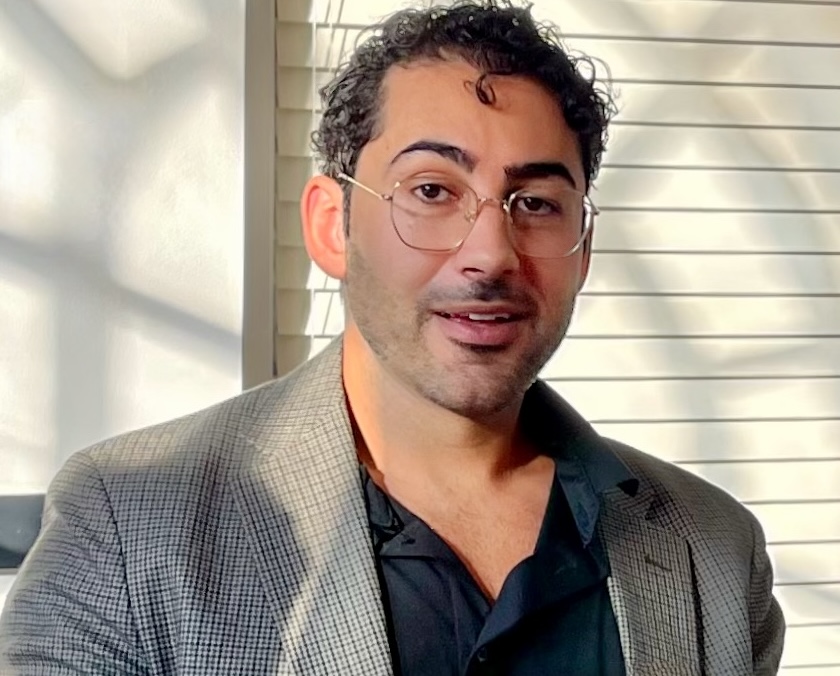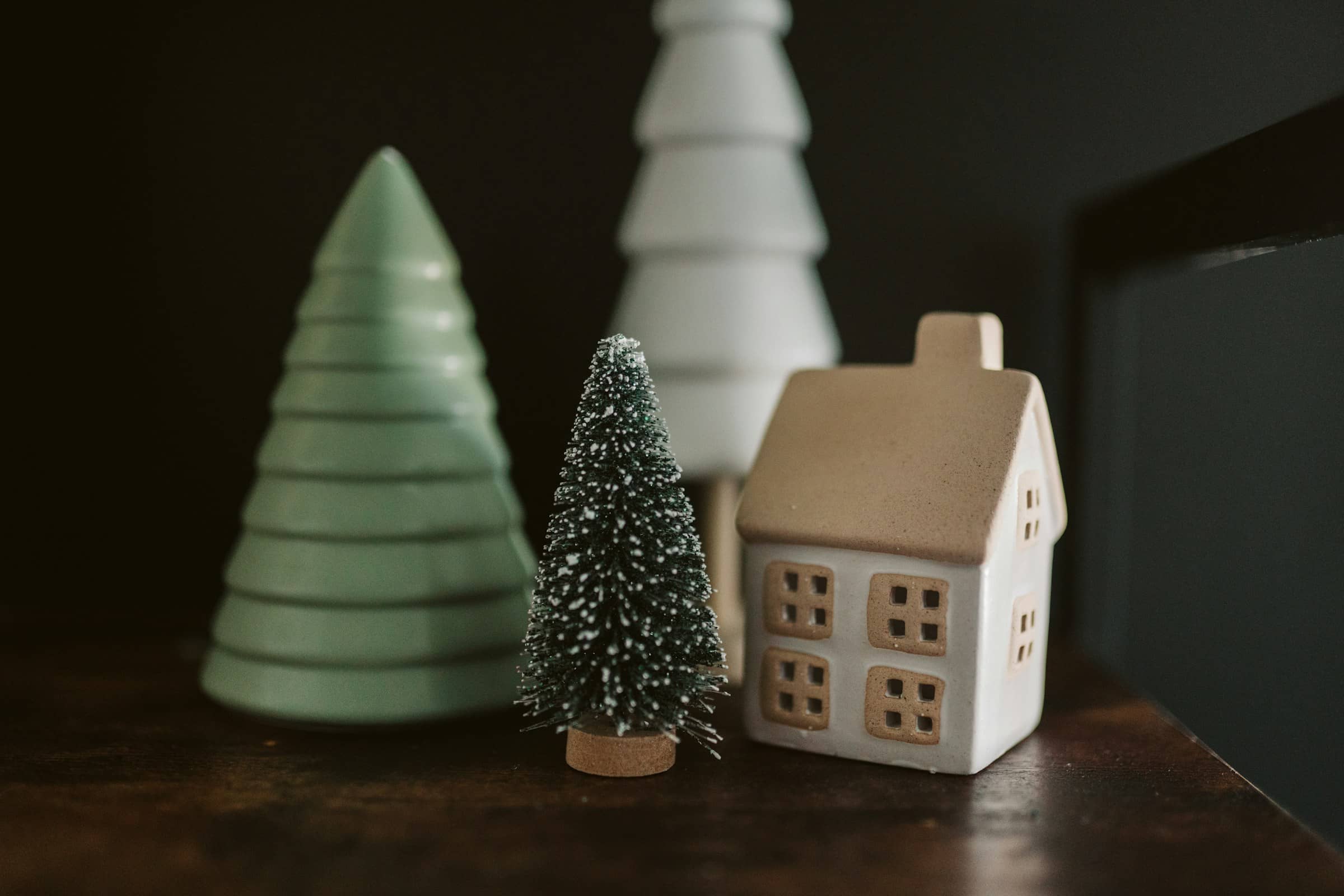Practicing Death to Live More Fully
Writer Ann Tashi Slater on funeral rites, the Bardo Thodol, and the liberating effect of marking transitions The post Practicing Death to Live More Fully appeared first on Tricycle: The Buddhist Review.

In Tibetan Buddhism, the bardo is a between-state. While the term is usually associated with the passage from death to rebirth, it can also refer to the journey from birth to death—as well as the various transitional states we encounter along the way. According to writer and Tricycle contributing editor Ann Tashi Slater, Tibetan bardo teachings can transform the way we live—and help us find lasting happiness in a world defined by impermanence. In her new book, Traveling in Bardo: The Art of Living in an Impermanent World, Slater explores how bardo wisdom can help us navigate change and transition with greater acceptance and creativity.
In a recent episode of Tricycle Talks, Tricycle’s editor-in-chief, James Shaheen, sat down with Slater to discuss the legends surrounding the bardo teachings, how what we pay attention to determines the nature of our reality, and how The Tibetan Book of the Dead can teach us how to live. Read an excerpt from their conversation below, and then listen to the full episode.
To give some background, could you tell us a bit about The Tibetan Book of the Dead, or the Bardo Thodol? What is a bardo, and how does the Bardo Thodol serve as a guide through the bardo experience? Bardo basically means between-state or the between. In Tibetan Buddhism, it is the time between death and rebirth. It’s also the time between birth and death, and it’s any stage of suspended reality, actually. It could be when you’re ill, for example, or you have an accident. It’s not necessarily a negative thing—it can also be when you’re on a trip, or something like that.
The Tibetan Book of the Dead, or the Bardo Thodol, is an 8th-century guide to navigating bardo. One of the really interesting things I’ve found as I’ve become familiar with it over the years is that it’s actually intended for both the living and the dead. I always thought it was for the dead, though I wasn’t sure what exactly that meant, because if people are dead, in what ways is it benefiting them? But I saw this when my Tibetan grandmother died, and I went to her funeral in Darjeeling. What happens is the lamas sit next to her body and read from The Tibetan Book of the Dead. And so the idea is that they’re guiding the dead person through the passage from death to rebirth, and at the same time, they’re guiding the living—us, who are listening to the prayers—through our own kind of bardos. It could be, for example, the bardo of the end of one life and the beginning of another. In this case, it would be the end of our life with her because she’s gone, and so helping us to see how we might come to terms with that. At the same time, you might be thinking about other things in your life that have come to an end and perhaps you haven’t really thought about or faced. In that way, it can be a guide for the living as well.
There are many legends surrounding the bardo teachings, which are considered terma, or treasure texts. Can you tell us about the legends of how the bardo terma were unearthed and the story behind what is now called The Tibetan Book of the Dead? So the legend is that Guru Rinpoche, who is also known as Padmasambhava, composed it and dictated it to his consort Yeshe Tsogyal, who transcribed it, and then he directed that it be hidden. According to legends, it was hidden in caves and in mountains. Some of my favorite hiding places are in the sky and in dreams and in the minds of disciples who weren’t born yet. Of course, that all sounds very fantastical, but the idea is that this wisdom would carry forward in the future, just like how you and I are talking about it now. In that sense, it could come forward so it could be discovered. It didn’t mean that you would hike up to some mountain and dig it out with your shovel but rather that if you had the right frame of mind, it was there to be revealed to you.
And your great-grandfather played a part in publishing the text. Can you tell us about that? What happened was the editor of the first translation of The Tibetan Book of the Dead was a man named W. Y. Evans-Wentz. He was from Trenton, New Jersey, and he came to Darjeeling in 1919. He was very interested in translating the Bardo Thodol. I don’t actually know the story of how he and my great-grandfather actually met, but my great-grandfather was chief of police in Darjeeling at that time, and he and Evans-Wentz met, and my great-grandfather gave him a letter of introduction to a lama in Sikkim, in Gangtok, who was a translator. Evans-Wentz took the letter and walked from Darjeeling to Sikkim with this letter in his pocket, and he met Lama Kazi Dawa-Samdup in Gangtok, and then together they began translating. Evans-Wentz didn’t speak Tibetan, so Lama Kazi Dawa-Samdup would translate and then Evans-Wentz would edit, and they would meet every morning over these endless cups of tea in Sikkim. That was 1919. One may wonder, of course, how did it go from there to being published by Oxford University Press in 1927? And what happened was Evans-Wentz took it to England, and the book in that translation and subsequent ones have sold over a million copies. So I guess in that sense, Guru Rinpoche’s wish has come true—the Bardo Thodol has carried down through generations, and people have found in it whatever they have found, whatever they see that has helped them.
You say your great-grandfather had great faith in the bardo teachings and in Guru Rinpoche in particular. Can you tell us about his near-death experience? How did his faith in The Tibetan Book of the Dead save his life? It’s a great question, and it’s a great story. I heard it from my grandmother. My great-grandfather was riding down from Tibet to India after a mission in Tibet in the early 20th century, and he and his party were caught in an avalanche. Many of them, including my great-grandfather, were buried along with their pack animals. He was buried under the snow, and he started praying to Guru Rinpoche. He was a very devout Buddhist, and he was holding his prayer beads and he thrust his hand up through the snow and said, “Save me, Guru Rinpoche, save me.” He was waving the prayer beads back and forth above the surface of the snow, and so some of the men who were still above ground saw him and pulled him out.
The way that this relates to what we’re talking about is that one of the central lessons of The Tibetan Book of the Dead and of the bardo teachings is to accept reality but not give up. And so for him, the reality that he had to accept was like, “This is really bad, and I have very little time before I suffocate.” And so it’s very much about taking action, right? If he had been in denial and said, “You know, this isn’t that bad, I’ll be out soon, and I’m just going to relax here,” he would’ve died, and if he had done what we often do when the reality we’ve known comes to an end, which is that we wish it hadn’t and we long for the reality we had, he could have spent his time daydreaming and saying, “Why can’t I just be riding along on a sunny morning on my way back home to Darjeeling?” Again, then he probably would’ve died. And so what I find so moving was that he put into action the teachings of Guru Rinpoche, which is to accept your situation and then take action.
Yeah, you write that The Tibetan Book of the Dead was “not only a religious text but a manual for everyday existence that guided his thoughts and actions.” So this is something he lived by. Yes, very much so. And it’s interesting because if he had just prayed, he would’ve died as well—he had to actually do something. If he had just stayed under the snow where nobody could see him, then he wouldn’t have survived. And so this is one of the stories my grandmother loved to tell, which is about how actually his faith in these teachings had, in an extremely practical way, saved his life.
So you say The Tibetan Book of the Dead speaks to our urge to seek greater meaning in life—or in the words of Evans-Wentz, it helps us “not to fritter away in the worthless doings of this world the supreme opportunity afforded by human birth.” Can you say something about that? Yeah, it’s the idea that actually there’s no time to waste. We live as if we’re immortal, and we think, “Oh, I’ll do it tomorrow,” whatever it is. My grandmother used to tell me about the sky burials that she saw in Tibet when she was there in the 1920s and how you see the body being chopped up into pieces and the vultures coming to take away the different pieces of the body as the lamas are praying. She said that throughout her life, Westerners would ask her about this custom and say, “Isn’t it barbaric and horrible?” And she said that actually she found it very inspiring because it was a reminder that actually there is no time to waste.
This is very much what the bardo teachings are about: how awareness of death actually allows you to have a better life and to live more fully. And so what Evans-Wentz is saying about not frittering away our time is basically speaking to that tendency that we have, where it’s all too human to put things off and to think that we’ll do it some other time. [The French novelist Marcel] Proust, who was always one of my heroes, was asked by a newspaper what people would do if the cataclysm came, and he says that people would say, “Oh, I’m going to visit the new galleries of the Louvre, and I’m going to go to India, and I’m going to throw myself at the feet of Miss X.” And then the cataclysm doesn’t come, he says, and we fall back into our usual ways—we don’t go to India and we don’t throw ourselves at the feet of Miss X. And the Dalai Lama says the same thing: We might die tonight, so do what’s important to you so that you won’t have regrets.
You also note that the bardo teachings frame between-states as transformative spaces. So can you say more about the transformative power of liminal states? The transformative power has to do with this idea of the between. There’s a Japanese idea of ma, which means a space where something can happen. It could be a moment of silence in conversation, where some other kind of understanding might arise or some other kind of perception might evolve. There’s always a possibility for new insight when we are in between-states like that, when we have a kind of emptiness, and emptiness not in the sense of nothing but in the sense of a kind of open possibility. One way that it’s thought of is like if you had a blank page in front of you. As a writer, if I have a blank page in front of me, that’s a state of possibility where anything can happen, and I can arrive at new perspectives and create something new.
There’s always a possibility for new insight when we are in between-states like that, when we have a kind of emptiness, and emptiness not in the sense of nothing but in the sense of a kind of open possibility.
You say that a fundamental part of the bardo journey is realizing that you’re dead. Can you say more about this stage and our reluctance to acknowledge endings? Yeah, it’s funny because I remember when I first heard that, I was like, What? How can you realize you’re dead if you’re dead? And what it means is that in the Tibetan belief, it takes us up to four and a half days to realize what’s happened. My grandmother always said that the dead person hovers around the altar room calling to the weeping family members saying, “I’m over here! Why are you so sad? What’s going on?” And then at some point they look in a mirror and there’s no reflection, or they look where they’ve just walked and there are no footprints, and it dawns on them what’s happened. So let’s say you have a job that you’re unwilling to admit is no longer suitable for you, or let’s say that your marriage actually ended a long time ago, but you’re still in it. Those are examples of hovering around where, in a sense, you’re dead. My grandmother used to say, “Oh, that person’s more dead than alive,” where you’re just going through the motions and not really facing the reality of your situation.
Right, you note that accepting change is essential to our survival, and in order to move forward, we have to face this truth and let go of whatever we’re clinging to that no longer exists. So what are some of the rituals that facilitate this letting go? At my grandmother’s funeral, there was a ritual where they tied a string to her thumb, and her end of the string was black and our end of the string was white. We had to hold the other end, and then the lama took this small knife and cut the string. That was one of the rituals to help her let go, but also to help us let go.
Also, I was really shocked at first that the family was invited or expected to light the funeral pyre. That really surprised me because when my American grandfather died, there was an open casket and they had put makeup on his face and we all filed past, and that was the extent of it, whereas here, my grandmother’s body was taken down to the cremation ground behind a monastery in Darjeeling and put on the pyre. My mother was first. She lit the pyre and then handed me the flaming stick, and then I had to light it. And then we watched my grandmother’s body burn. That is a tremendous non-attachment ritual. I thought it would be upsetting, but it wasn’t—it was very moving. It was this unbelievably beautiful day in Darjeeling, and she was cremated at a monastery called Ghoom, and Ghoom is the mistiest place. I don’t think I had even ever seen the monastery in its entirety because it was always shrouded in mist. And on this day it was totally clear. There was not a cloud in the sky. It was very moving because she died at a hundred, and she had spent a hundred years of her life in this town, and when she died, her body was burning facing toward Kangchenjunga, which is the Himalayas, the mountains toward Tibet. There were prayer flags next to the pyre that were blowing in this beautiful breeze over the tea gardens, and it felt just very right as a way to say goodbye to her. And she would’ve been the first one to say that when it’s time to go, it’s time to go. She was not attached at all in that way. And so for us, those kinds of rituals, with the pyre and the cutting of the string, were very helpful.
You know, you talk about practices to prepare us for letting go, and you quote the philosopher Michel de Montaigne, who wrote, “To practice death is to practice freedom.” So how do you understand this quote, and what does it look like to actually practice death? Yeah, it’s an interesting idea. In his essays, Montaigne talks about the old Egyptian custom, where in the middle of feasting and drinking and merrymaking, they would bring in a corpse. That might seem very morbid, but in fact it was a way of reminding people to live fully and to really embrace life. In my case, I had the chance to actually light my grandmother’s pyre and sit next to her body. But most of us aren’t going to do that, and that’ll probably be the only time I do it, because hers was one of the very last traditional Tibetan funerals. But the idea of practicing death is just to start noticing, for example, when a tile falls from a roof, or a horse stumbles, you might think, “Oh, what if that was death itself?” I’ve actually practiced this myself, and it’s pretty interesting because like anything, I think you actually can get used to it. For example, I’ll think, “Oh, this is the beginning of a trip I’m taking.” And at the end, I’ll take a moment and think, “This is the end of this trip,” whereas normally we don’t mark things necessarily in that way.
For example, sometimes I’ll reflect on my grandmother’s house, and I go through her house room by room, and I look at all the things that she wore to the night dances at the Gymkhana Club and the thangka scroll paintings of the Buddha’s life and all these things that are there even though she’s not. And that, again, is a reflection on death, but death in the sense of impermanence. You can even think for a minute about who you were thirty years ago compared to who you are now, right? It’s different. You’re different. And so that also is a kind of reflecting on the change that takes place. Even a few moments of that gets us more used to it. That’s why the Dalai Lama says he meditates on death every day. He says it’s like anything else—if you practice it, it’s like a tornado drill or something, except most of us aren’t going to get caught in a tornado, but we’re definitely going to die, and we’re definitely going to experience endings. A relationship will come to an end. We might lose our parent. We might have a child, which means our pre-child life is over, whatever it is. I mean, it’s happening all the time.
This excerpt has been edited for length and clarity.

 BigThink
BigThink 






























